Looking for the most epic things to do in Antarctica? Don’t miss these unique places and activities.
Visiting Antarctica is an adventure like no other, and what’s so special is that no two trips will ever be the same. Unlike other cruises with guaranteed stops, you will be on a discovery cruise that builds your itinerary day by day. Because of the unpredictable Antarctica weather, the captain and discovery team constantly monitored where we could go next.
Though you have no control over your day-to-day itinerary, the ship you travel on can determine your options. Here’s what you need to know.

This post may contain affiliate links, where we receive a small commission on sales of the products that are linked at no additional cost to you. All opinions are always our own. Read our full disclosure for more info. Thank you for supporting the brands that make Local Adventurer possible.
Last Updated: October 27, 2025
What You Need to Know Before You Go
When visiting Antarctica, you’ll notice that all the cruises are discovery cruises. That means there is no set itinerary, and the crew decides where the ship will go daily.
First, IAATO (International Association of Antarctica Tour Operators) rules only allow smaller expedition ships to land to help protect the wildlife and land. Larger cruise ships can only sail by.
Second, being on a Class 1A ice-rated and Polar Class 6-rated ship like Scenic Eclipse II allows you to pass the Antarctic Circle and go further south than most ships. These Scenic Eclipse luxury yachts were the first of their kind and were specifically built to navigate Antarctic waters and pass the Drake Passage safely.
Lastly, the longer your cruise is, the more opportunities you’ll have to see wildlife, visit destinations, and do more activities. You may have poor microclimates everywhere some days, and you want to maximize your chances since getting to Antarctica is already a long journey.
We may have had a unicorn trip with mostly great weather. It was nice to see the captain and staff get excited. One person we met who had been working his 100th trip to Antarctica said it was his first time being able to visit number 13!
See More: 17 Things You Need to Know Before Visiting Antarctica

Best Places to Visit in Antarctica
Below are the places we visited on our trip so you can follow along in the order of our travel itinerary. Hoping the weather allows you to see these magical places, too!

1. Detaille Island
-66.8666663,-66.7936327, map
Highlights: Research Station Base W’s historic huts, Adelie Penguin Colony
Wildlife Spotting: Adelie Penguins, Antarctic Shag, Weddell Seals, Crabeater Seals, Whales, Brown Skua, Petrels
Detaille Island was our very first stop in Antarctica. We didn’t know what to expect, but looking back, it was the perfect introduction. It had everything: our first wildlife encounters, beautiful icebergs, and historic huts.
The UK Antarctic Heritage Trust maintains the island and the huts, which are like living museums. It was a former British research station, Base W, operating between 1956 and 1959. You can see an Adelie colony from far away, but we also saw one solo Adelie hopping around near our landing site.
After our landing, we went on a zodiac cruise around the area to see some of the ice formations and wildlife floating on the ice closer up.
Photo Tip: You need a long lens to shoot the penguin colony (this is the lens I shot with), and they were still tiny. The last photo was of a solo Adelie Penguin on an iceberg.

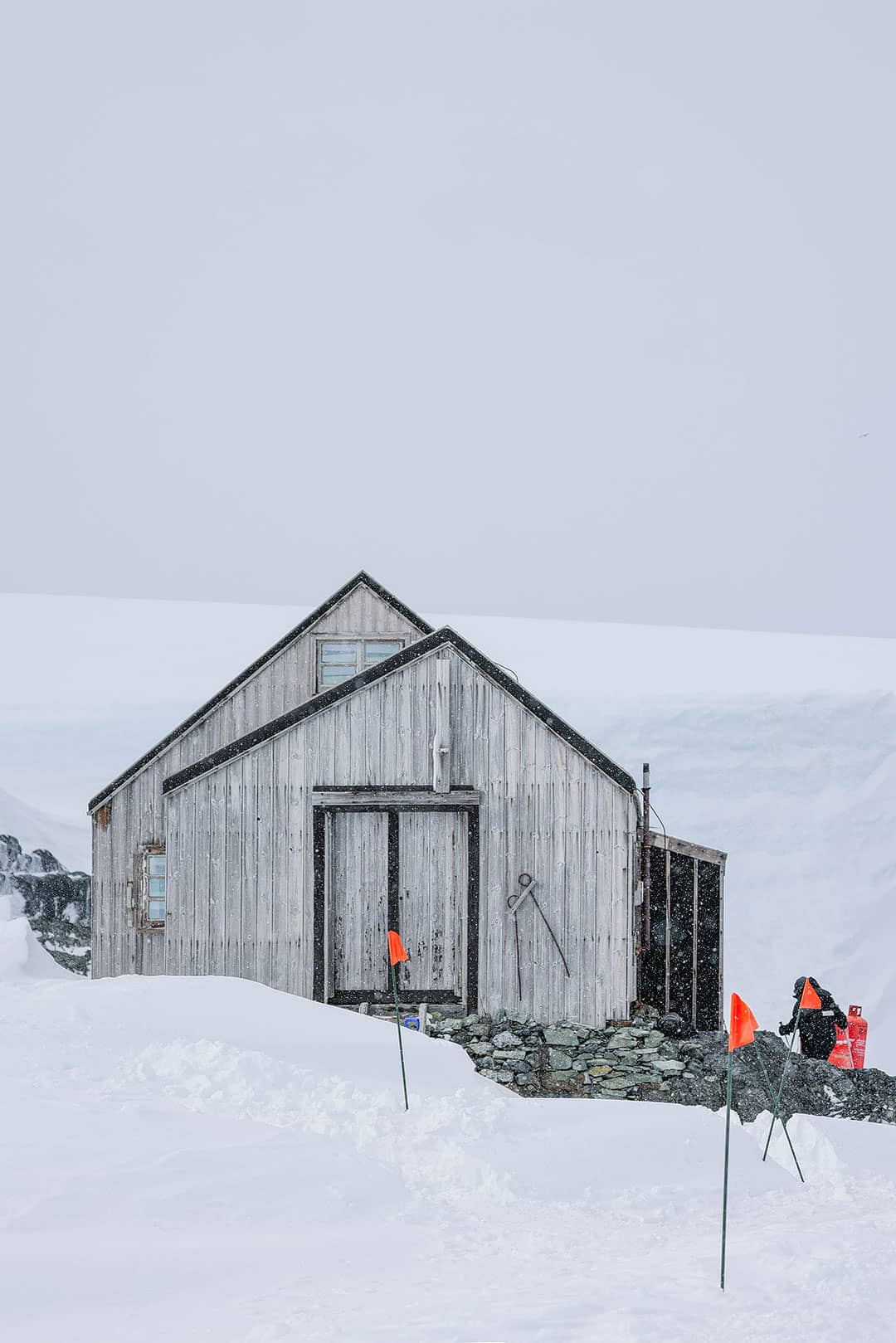



2. Horseshoe Island
-67.8499993,-67.2102998, map
Highlights: Rocks with Malachite, British Antarctic Survey’s Station E Historic Buildings
Wildlife Spotting: Adelie Penguins, Weddell Seal, Crabeater Seal, Petrels, Gulls, Terns
When you walk onto Horseshoe Island, it’s hard to ignore the bright green veins in the rocks. Malachite makes them look like they’re from a different planet. Jacob kept referring to them as kryptonite.
You can walk up to a couple of viewpoints at Horseshoe Island, explore the historic buildings of Station E, or keep your eye out for wildlife. We saw a lone Adelie, Petrels with chicks, and some seals lazing in the bay.
Pro Tip: Keep an eye out for seal bones. The shoreline near the bay had many seal bone pieces all over the place that you may walk past if you’re not looking for them.


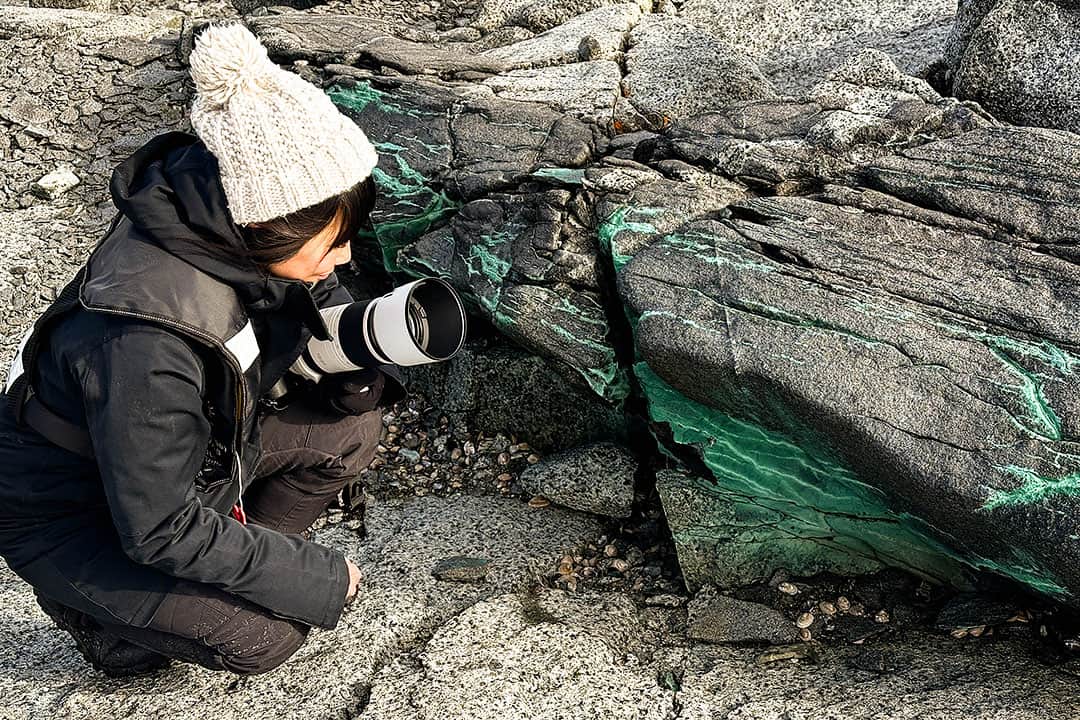
3. Bongrain Point
-67.7166667,-67.8025749, map
Highlights: Adelie Penguin Colony
Wildlife Spotting: Adelie Penguins, Cormorants
We went on a SUP excursion at Bongrain Point, a great way to have a quieter, meditative experience (Scenic Eclipse II fully outfits you in dry suits). But the wind picked up, so we had to cut it short and head to the Adelie penguin colony instead.
The Adelie Penguins were everywhere, bathing on the shore, walking to and from their colony, and many huddled together nursing their chicks.
Since there were so many penguins moving back and forth, you had to be extra diligent to give them space (stay at least 5 meters or 15 feet away).
Photo Tip: Having your camera without underwater housing can be nerve-wracking, so if photography is your primary goal, it’s better to be on zodiac boats or to opt for a landing.


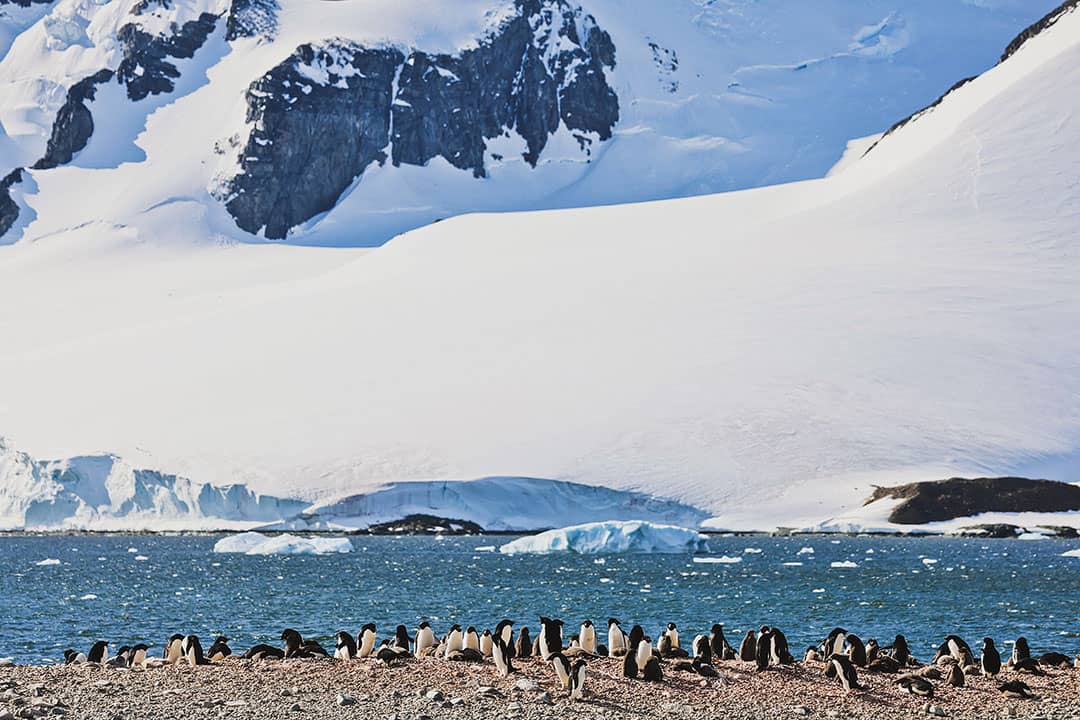
4. Stonington Island
-68.1833281,-67.0389247, map
Highlights: East Base of the United States Antarctic Service Expedition, British Antarctic Survey’s Station E, Huge Ice Shelf, Helicopter Tour, Polar Plunge
Wildlife Spotting: Adelie Penguin, Skuas, Various Seals, Various Whales
Stonington Island was the first chance for us to see an American Base. One of the unique features here is the two out-of-commission tanks they brought down as a mode of transportation (‘Murica!). There’s also Station E here, but it wasn’t open. Across the way, you can admire a giant ice shelf where some guests saw a big ice calving.
Afterward, we did a helicopter tour to appreciate the landscape and vastness from a bird’s-eye view. We even saw some whales.
Finally, conditions were perfect for a polar plunge. Luckily, it was a rare warm, sunny day to ease us into polar plunges. After setting up, we headed to the back of the ship, where they tied a safety belt on you before jumping in the water.
Once you get out, they have towels ready to wrap you and a choice of a shot or hot chocolate to warm yourself. The anticipation of jumping in was worse than actually doing it, plus I swam so fast that my brain didn’t have time to process what just happened.
Pro Tip: Wear robes over your bathing suit during the polar plunge. It keeps you warm while waiting, and it’s nice to throw back on after you get out.


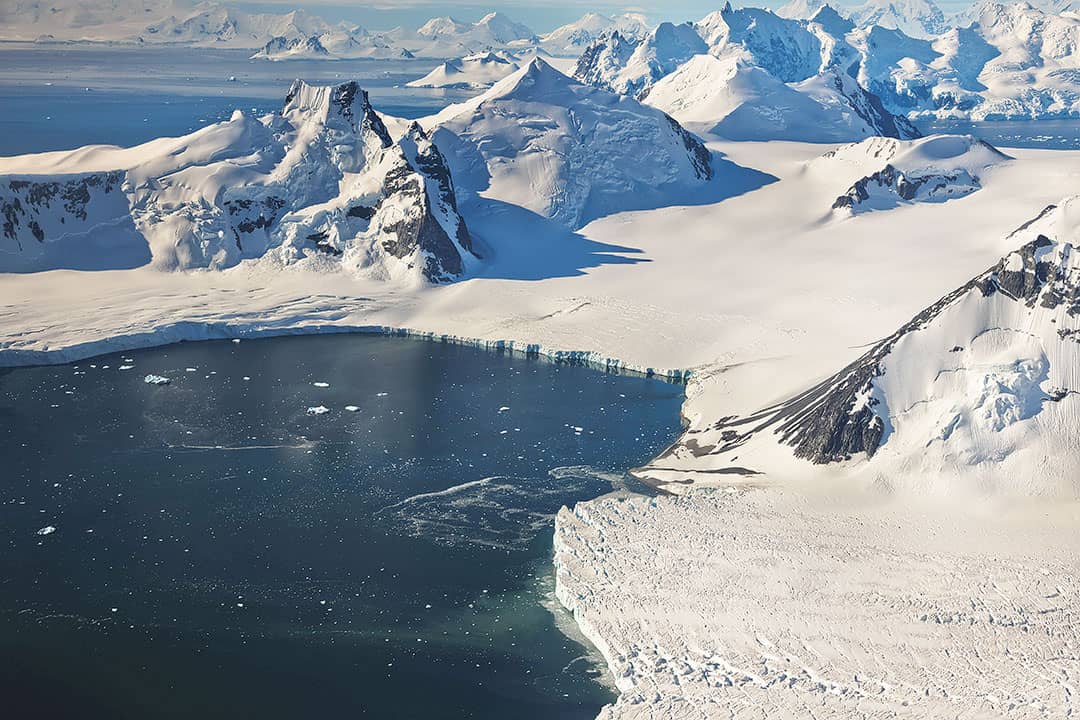
5. Jenny Island
-67.7333324,-68.4103212, map
Highlights: Elephant Seals
Wildlife Spotting: Elephant Seals, Leopard Seals, Fur Seals, Weddel Seals, Crabeater Seals
We saw a massive group of Elephant Seals at Jenny Island basking in the sun and throwing their weight around. Afterward, we zodiac cruised around and saw a Leopard Seal floating on ice, too. Some guests said they saw all five seal types here.



6. Rothera Station
-67.5678406,-68.1292501, map
Highlights: Active Research Station
Wildlife Spotting: Whales, Birds
Rothera Research Station was established in 1975 and is the starting point for most British Antarctic Survey missions. We didn’t stop since it was an acting station, but we got to cruise by to see the scale of the station in comparison to the historic ones we visited.

7. Fish Islands
-66.0333333,-65.419247, map
Highlights: Adelie Penguin Colony
Wildlife Spotting: Antarctic Shags, Adelie Penguins, Wilsons Storm Petrel
We zodiac cruised around Fish Islands, which ended up being one of our favorite outings.
An estimated 4000 breeding pairs of Adelie penguins, along with Antarctic shags, inhabit Fish Islands and the Minnows. They were hard to tell apart at times because of their similar color patterns. We spent hours watching three goofy Adelie penguins play. Fish Islands is also where I shot my favorite penguin photo from this trip, the “Penguin Wedding.”



8. Grandidier Channel
-65.5833333,-64.7525803, map
Highlights: Whales Galore, Beautiful Icebergs, Stunning Mountain Scenery
Wildlife Spotting: Humpback Whales, Antarctic Minke Whale, Orcas
While traveling through the Grandidier Channel, we were amazed by the beautiful ice formations and mountain scenery. Someone spotted a pod of orcas in the distance, followed by another pod. Then, two pods of humpback whales joined in. It was the craziest whale-watching experience of our lives. They were continuously peeping at us or showing off their tales.
Pro Tip: Go to the Navigation Bridge to watch whales. Scenic has an open bridge policy, and it’s the best place to stay informed since they’re always on the lookout and have more experience spotting wildlife.
Photo Tip: Make sure you always have your long lens ready and layers on you. You never know when you’ll have to hop outside.


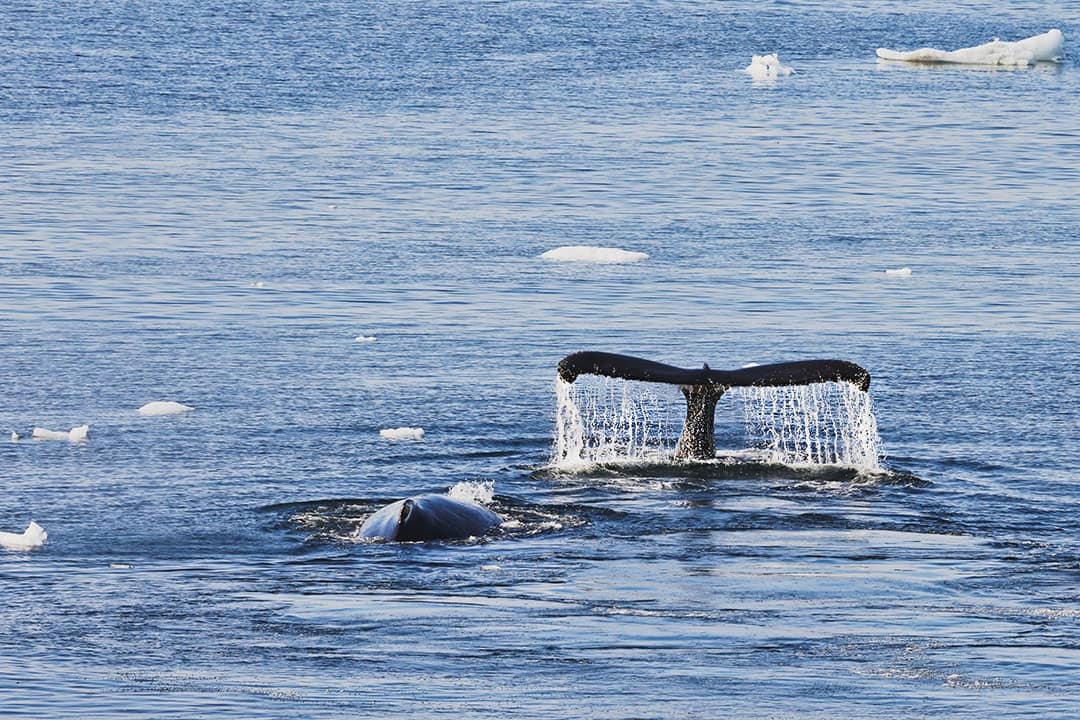
9. Lemaire Channel
-65.133,-64.0025803, map
Highlights: Most Beautiful and Narrow Passage
Wildlife Spotting: Humpback Whales, Adelie Penguins, Gulls and Terns, Petrel
Many call the Lemaire Channel the most beautiful place in Antarctica. It’s a narrow passage with towering mountains on both sides. We saw Humpback Whales feeding in the area as we entered the channel.
We were at a set coursed menu when passing through, but they allowed us to go up to the ship’s bow for ten minutes to see it first. Even during our meal, whales came up less than 50 feet from the window beside us.


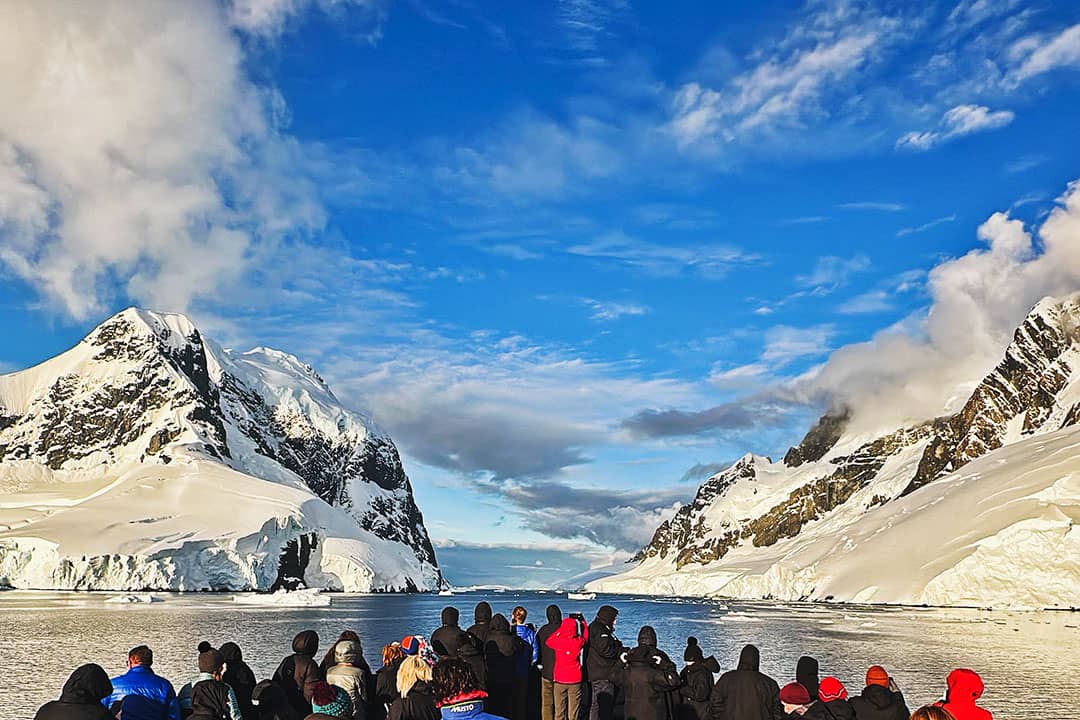
10. Flandres Bay
-65.0207214,-63.7911339, map
Highlights: Kayaking, Ice Formations
Wildlife Spotting: Giant Petrels, Brown Skua, Antarctic Shag, Humpback Whale, Seals
We kayaked in Flandres Bay. The water was glassy smooth, with stunning ice formations and mountains surrounding us. We saw very little wildlife compared to other days, like one sleeping humpback whale from a distance and a few Giant Petrels and Skuas.
It worked out perfectly as a photographer so that we could focus on the kayaking. If there had been tons of wildlife, I would have preferred to be on a zodiac since shooting on them is more manageable. We could hear some small avalanches and ice calving in the distance.
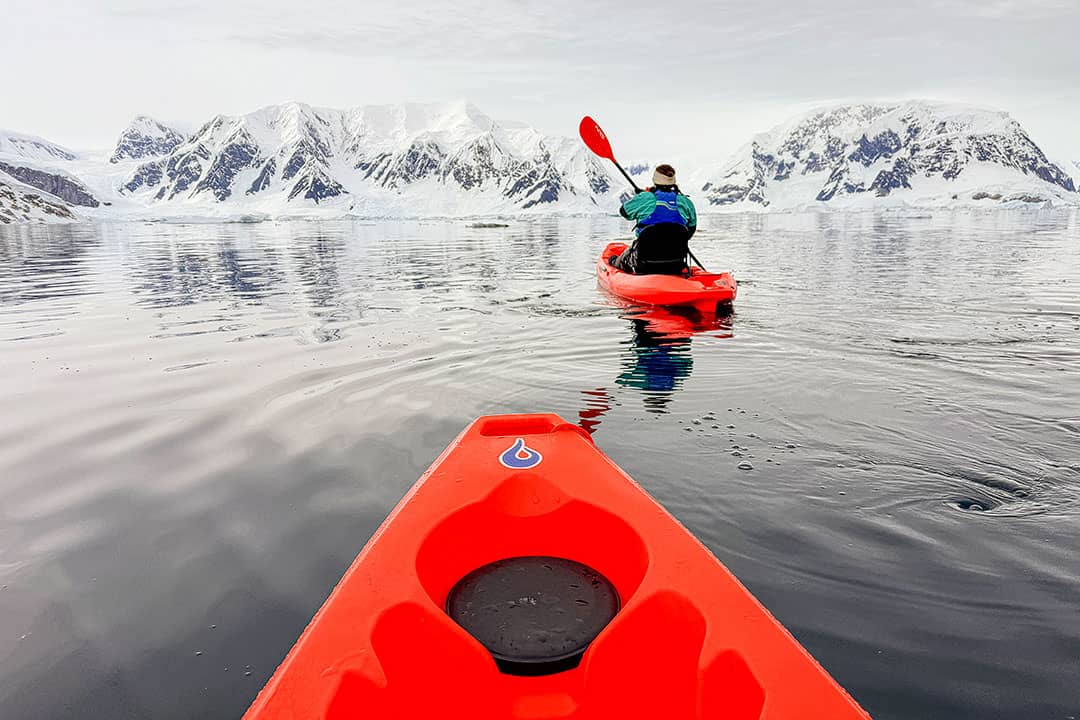
11. Port Lockroy
-64.8250761,-63.5331398, map
Highlights: Gentoo Penguin Colony, Penguin Post Office, Gift Shop
Wildlife Spotting: Gentoo Penguins
The UK Antarctic Trust runs Port Lockroy. During our visit, they were not taking visitors to protect the local Gentoo Penguin colony from the Avian Flu. Instead, a handful of the team came aboard our ship to give a presentation on their work. The staff there counts penguins, maintains the buildings, runs a gift shop, and has a post office.
After the presentation, they set up a pop-up post office and souvenir shop on our ship. They had clothes, alcohol, calendars, ornaments, postcards and more. Any purchases help support the UK Antarctic Trust. We purchased a handful of postcards to mail to our friends and family. Postcards were 2.5£, and postage was 2£ per postcard.
They said the postcards can take from one to three months to deliver. Ours took about a month before they arrived on the East Coast.
Pro Tip: They also have a passport stamp to stamp your passport, or we stamped the outgoing postcards.

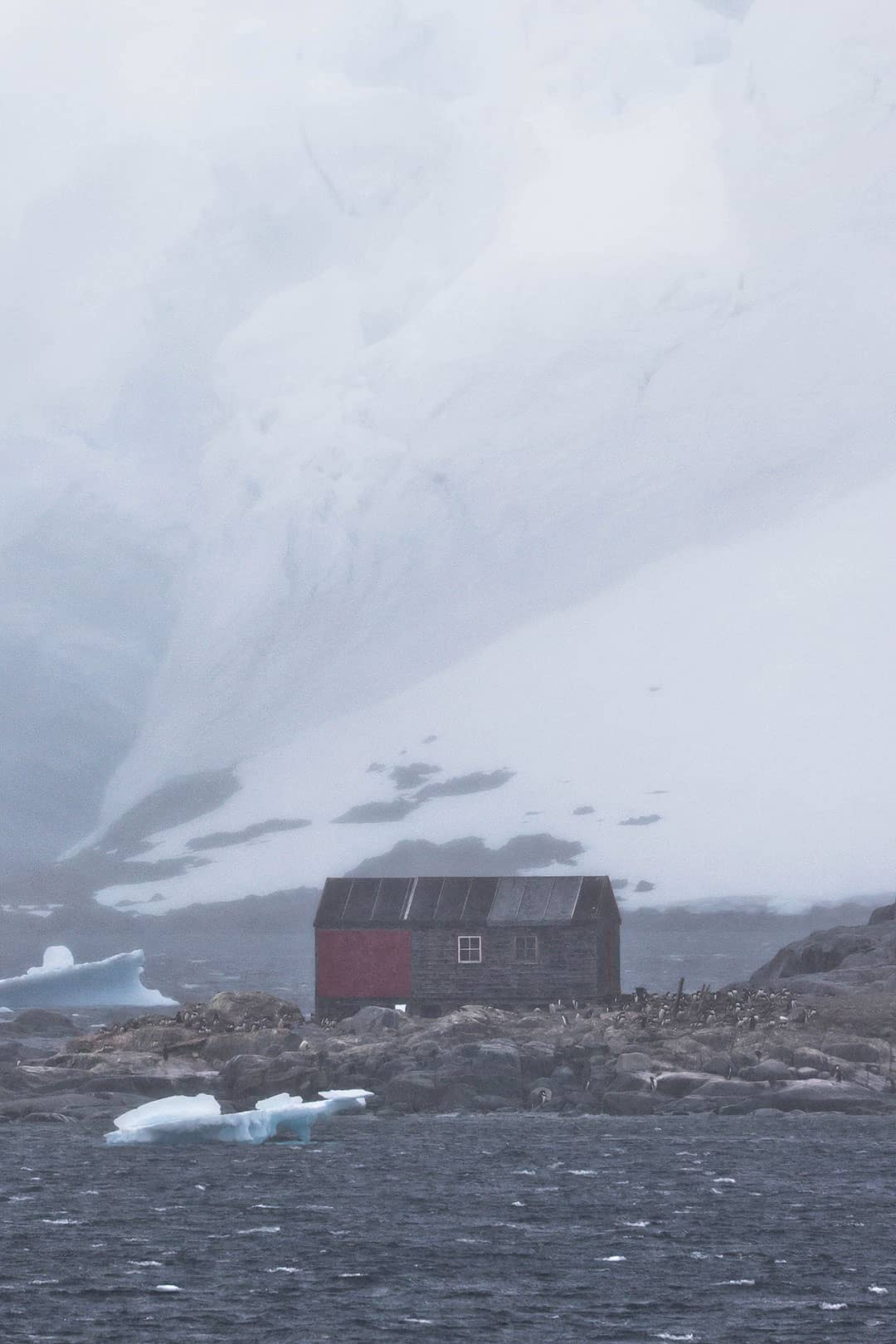
12. Palaver Point
-64.15,-61.7525803, map
Highlights: Chinstrap Penguin Colony
Wildlife Spotting: Chinstrap Penguins, Seals, Skuas, Petrels, Gulls, Terns
After mainly seeing Adelies, we were excited to meet our first Chinstrap Penguins. They were so fun to watch and had chicks they were nursing. Palaver Point involved a short hike up to get a better vantage point of the colony. I could watch them all day! You can watch our fun video of them here.



13. Spert Island
-63.8499943,-60.9889249, map
Highlights: Beautiful Glaciers, Caves
Wildlife Spotting: Elephant Seals, Leopard Seals, Chinstrap Penguins, Gentoo Penguin
The staff was excited when we headed to Spert Island. We had people on our ship nearing 100 voyages to Antarctica who had never been because conditions didn’t work out.
Just when we thought the trip couldn’t get better, Spert Island wowed us with its ice formations and sculptures carved out by nature. They were the most beautiful we’ve seen on the entire trip.

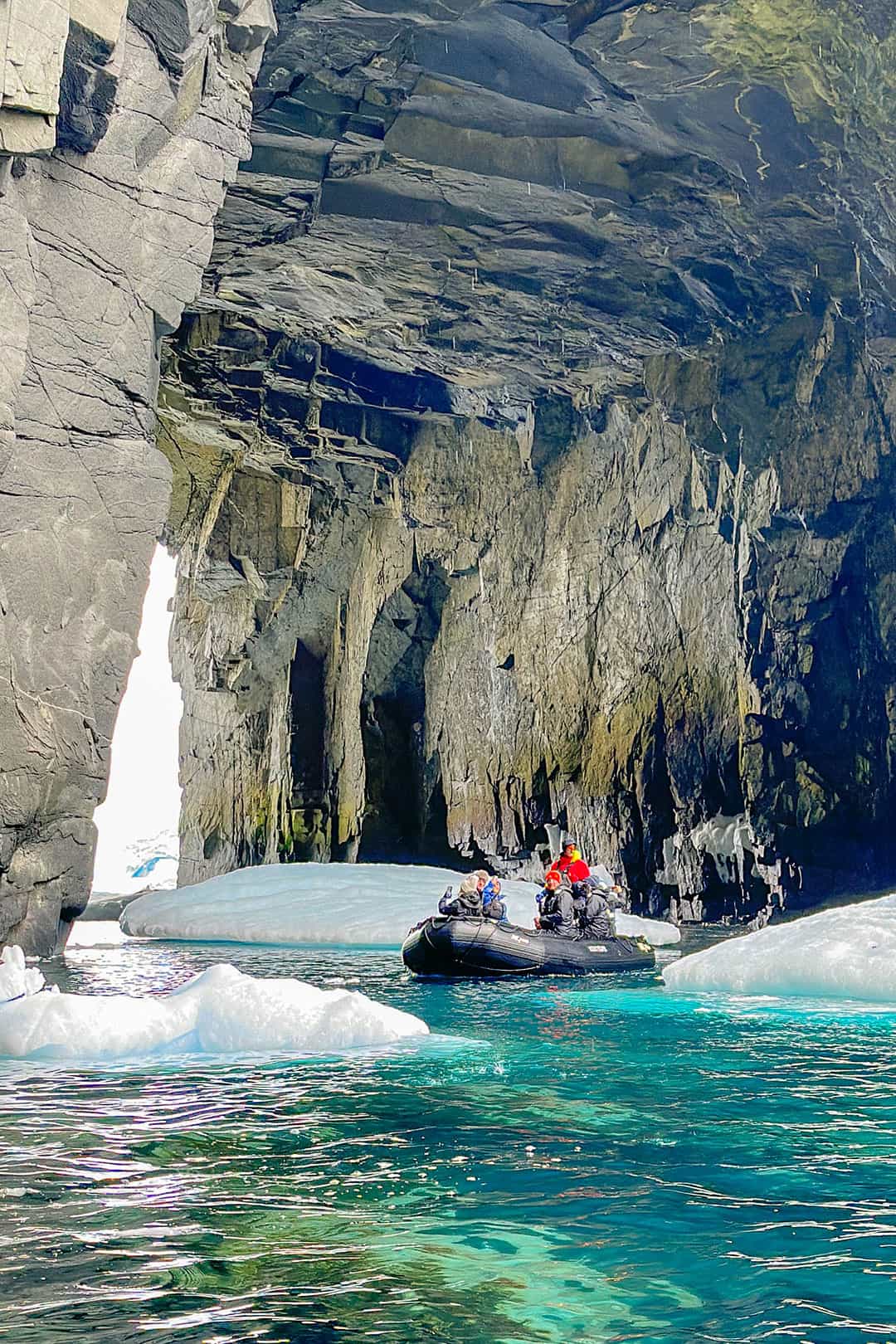
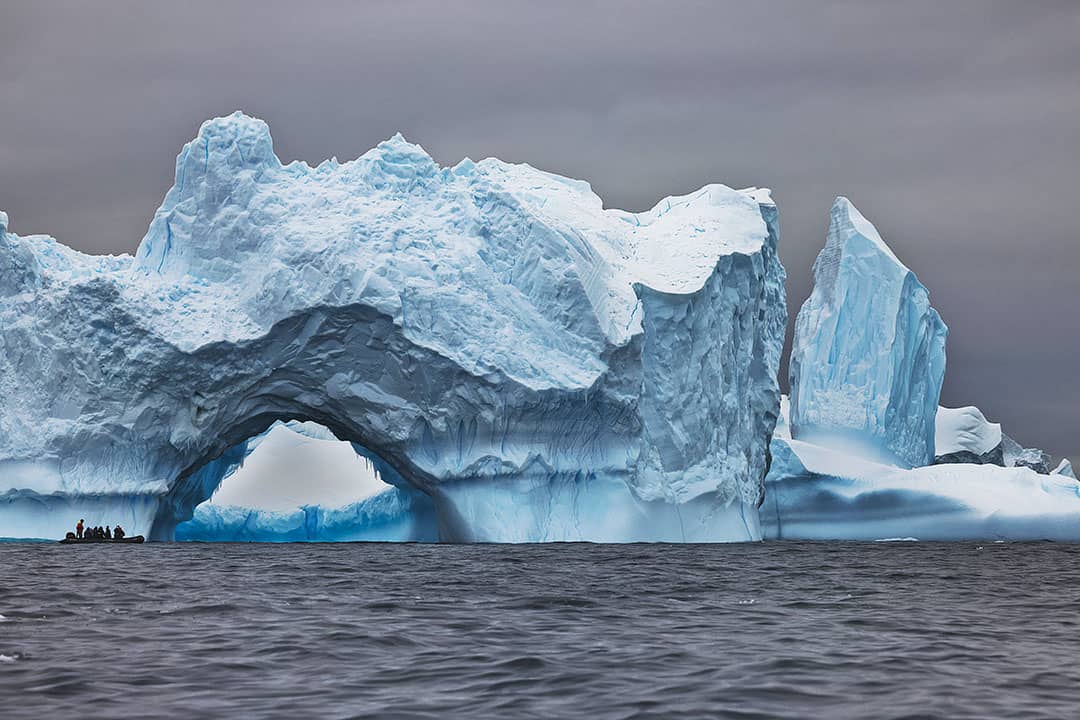
14. Fournier Bay
-64.5166127,-63.1103215, map
Highlights: Ice Formations, Pancake Ice
Wildlife Spotting: Leopard Seals, Petrels, Antarctic Tern
Using a scope, we guessed that one iceberg was over 900 feet tall. We saw all ice forms here: glaciers, ice sheets, icebergs, growlers, brash ice, and pancake ice.



15. Neko Harbour
-64.8375963,-62.7515093, map
Highlights: Gentoo Penguin Colony, Continental Landing
Wildlife Spotting: Gentoo Penguin, Humpback Whales, Fur Seal, Brown Skua, Petrels
Our final stop was Neko Harbour, where we made our continental landing and finally saw the Gentoo Penguins. I loved seeing their penguin highways. They were deeper highways than the other colonies, perhaps because they were larger penguins.
They also had the youngest chicks, some only a few days old. Since it was our last outing, we stayed as long as possible to watch them nurse and steal rocks from each other. When we returned, a few curious humpback whales swam beside the ship. They were so close I had to take off my long lens.






Map of the Best Things to Do in Antarctica
Essential Tips
- Choose your Antarctica cruise wisely! Some have limited stops, while others do sail-bys only. Scenic was an amazing trip because we got the chance to go further South than most ships.
- All activities like zodiac cruises, kayaking, SUP, and polar plunges can happen at multiple destinations, but it’s all weather dependent. Kayaking and SUP have limited spots that they fill by invitation only. They do their best to make sure every guest who wants to has the opportunity to do it at least once. You can also ask to be put on a waiting list in case someone decides to cancel.
- If you plan on photographing wildlife, have a long lens with you. I mainly used this lens for any of our excursions. We also brought a 2x Extender but rarely used it since the wildlife was close enough.
- For more tips on planning your Antarctica trip, check out our post on the 17 Things You Need to Know Before Visiting Antarctica.
Planning Checklist
- Get comprehensive insurance for your trip.
- Download these helpful language apps.
- Arrange a rental car for your trip.
- Get airport lounge access.
- Buy a travel charger to keep your devices charged.
- Get a new backpack for your trip.
- Pack the appropriate shoes for your trip.
- Don’t forget your in-flight essentials.
Do you want to visit Antarctica? What do you want to see most?
Did you enjoy this post? Pin it for later


SEE More International City Guides
⟡⟡⟡⟡⟡
“Discovery consists not of seeking new lands but in seeing with new eyes” – M. Proust

Esther + Jacob
Esther and Jacob are the founders of Local Adventurer, one of the top 5 travel blogs in the US. They believe that adventure can be found near and far and hope to inspire others to explore locally. They explore a new city in depth every year and currently base themselves in Las Vegas.
Follow on Instagram (E + J), YouTube, TikTok, and Pinterest.
